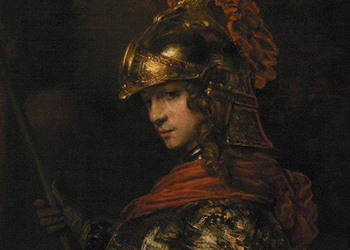The Gulbenkian Collection Comes Out of the Gilded Closet?

Queer Narratives in the Gulbenkian Collection brings into the open stories that are often hidden in art institutions, either deliberately or inadvertantly. To speak about an artist’s homosexuality, or to ‘read’ an artwork as ‘queer’, usually requires special justification and marks it out as “other” in the minds of many visitors and curators in ways that cause nervousness and anxiety. The effect is to affirm narratives of art history that exclude certain people and stories, creating imbalances and inequalities in collections that should be for everyone. To question and challenge these narratives it is necessary to say out loud, in public, that queer readings are possible and can add to our understanding or appreciation of an artist, an artwork, or a great collection.
In some cases, the artist’s life, so often referred to in readings of straight artists, is veiled or excluded. John Singer Sargent is an artist who was never able to be open about his sexuality during his lifetime, but whose work has since been viewed through the lens of his closeted nature. Subjects from Classical Mythology allow us to tell stories that are outside the heteronormative and that include same sex desire, such as a painting of Diana and Callisto, or Houdon’s statue of Apollo in the lobby of the Calouste Gulbenkian Museum, the god whose love for the beautiful young man, Hyacinthus, makes him an icon of gay culture. Furthermore, the delicious ambiguity of Rembrandt’s Pallas Athena moves the viewer beyond binaries and into the realms of gender fluidity.
Queerness can also be an element of style, as explored in Susan Sontag’s ‘Notes on Camp’ and evidenced in the chinoiserie objects, French Roccoco furniture, Art Nouveau jewellery, and the exaggerated performativity contained in 18th century portraiture. Such a reading emphasises the playfulness of artificiality, revelling in it rather than condemning it.
There also becomes space to explore queer iconography in non-western cultures and societies, such as the use of the chyrsanthemum in Japanese decoration and the peony in Chinese decoration, both flowers having been used as coded representations of gay male desire. One of the most wonderful discoveries of the Collection is the page from Sa’di Bustan that illustrates the story of love between two men, related in a non-judgmental way. This literal possibility to turn the page, revealing or obscuring such a moment, is why it is so important to speak these stories aloud.
Michael Langan